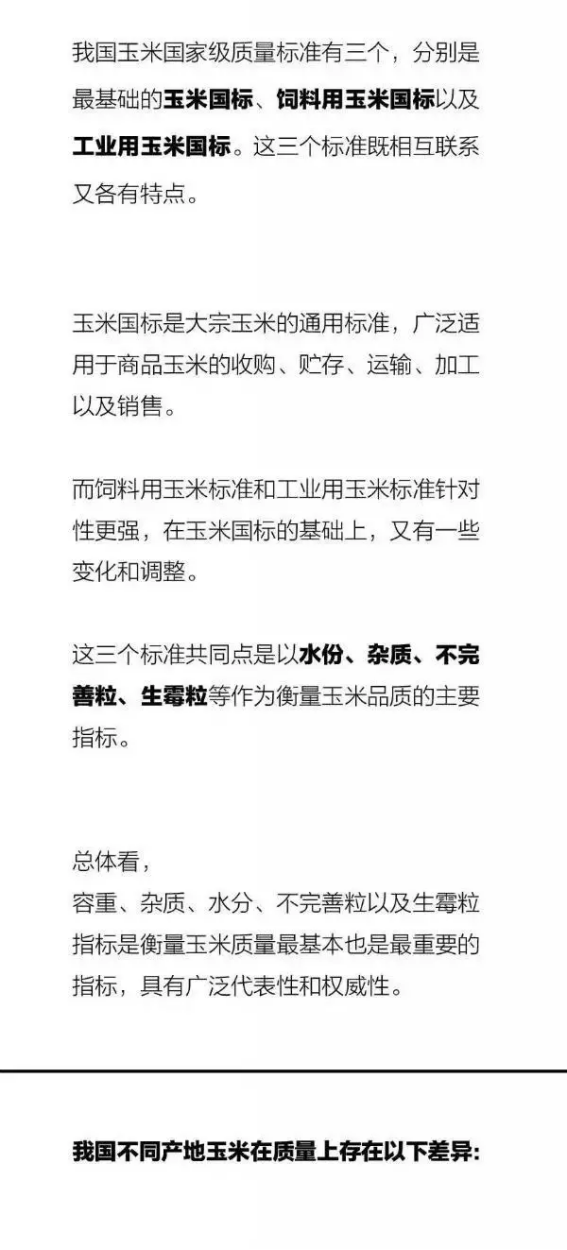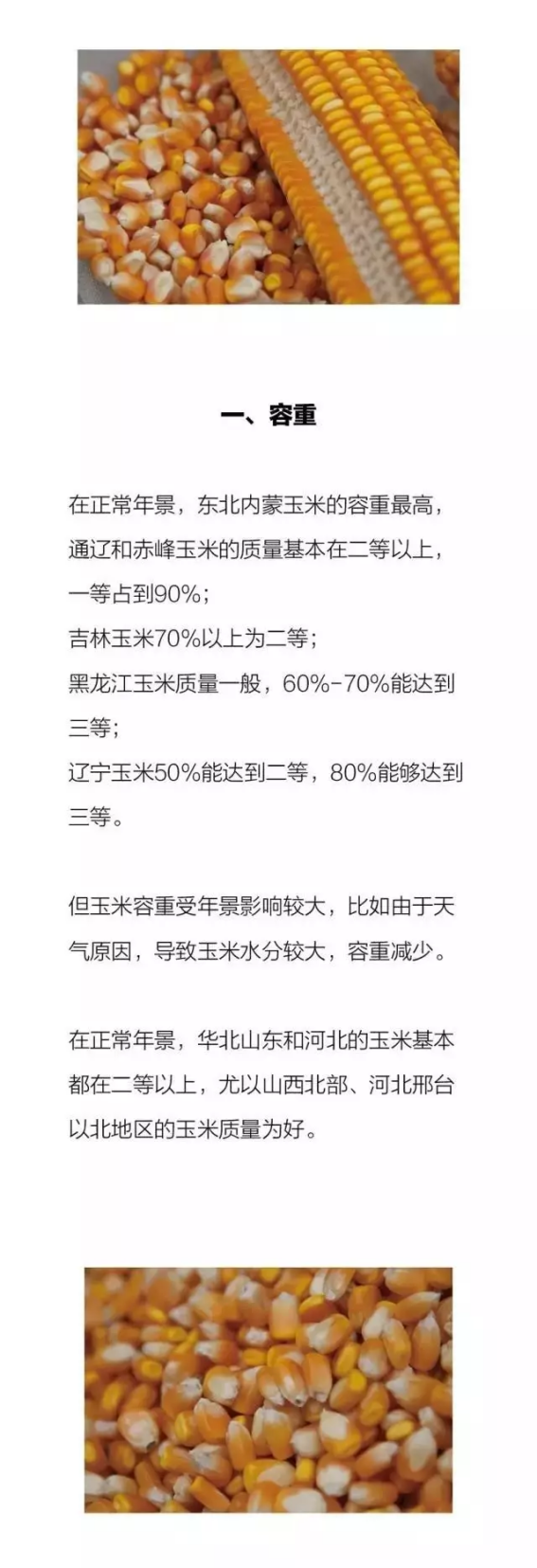




再说说这个“几个水儿”,它跟玉米的价格那是息息相关,水分越低,玉米的价格越高,这个想必大家都了解,那今年的玉米价格与含水量又是怎样一个具体情况呢?那就请大家看看下面的这个表格吧,下表是当前辽宁各地不同含水量下的玉米产地收购价格区间。

How to convert the price of dry and wet grain?
This involves the discounted dry price of corn wet grain.
The dry price of corn tide grain means that when purchasing corn, the purchaser requires that the water content of corn should not exceed 10%. For example, the moisture content of corn is 15%, the sun is not dry enough, some are wet, and 5 jin should be deducted from 100 jin, which is only 95 jin.
The specific algorithm, give two examples.
1 conversion of corn water content (dry and wet grain).
Take 30% as an example: the corn with 30% water content is converted into the national second-class corn standard (14.5% moisture). The calculation process is as follows:
A moisture deduction of 1.5 (the deduction loss coefficient varies from enterprise to enterprise, so we first calculate it according to the commonly used 1.5).
30-14.5-15.5.
15.5 × 1.5 × 23.25.
23.25 jin should be deducted from 100 jin of grain.
2 calculation of moisture and price of corn.
The price of different water content is different, but if you want to convert it into the price of standard water content, how to calculate it?
Here's a formula:
Formula for calculating moisture and price of corn:
Tide grain price / [1-{(tide grain moisture-14) * discount ratio} / 100] = discount dry price.
Now the price of wet grain (30% moisture) is 0.6 yuan / Jack, and the discount ratio is 1.2. What is the price of dry grain (according to 14% moisture)?
Bring in the formula:
Dry value = 0.6 / [1-{(30-14) * 1.2} / 100] = 0.74 yuan / jin.
How to calculate the final weight of corn after drying.
For example, corn 35 water drying to 15 water 100 jin of grain will still be how many jin of calculation method is?
Formula:
Weight after drying = original weight × (1-raw moisture%) / (1-drying moisture%).
Into the formula, the weight after drying = 100x (1-35%) / (1-15%) = 76.5 jin.
The above is the introduction of some simple formulas, through which you can roughly calculate the weight of the new grain after drying and the related price.
The calculation results will have a slight deviation, the formula does not include drying fees and other labor costs, and the price should be based on the actual market.
If you do not quite understand, it does not matter, search the dry and wet grain discount formula on the Internet, there will be a web version of the automatic algorithm, as long as fill in the key values, the operation is still very simple.
Source: Chinese grain and oil





